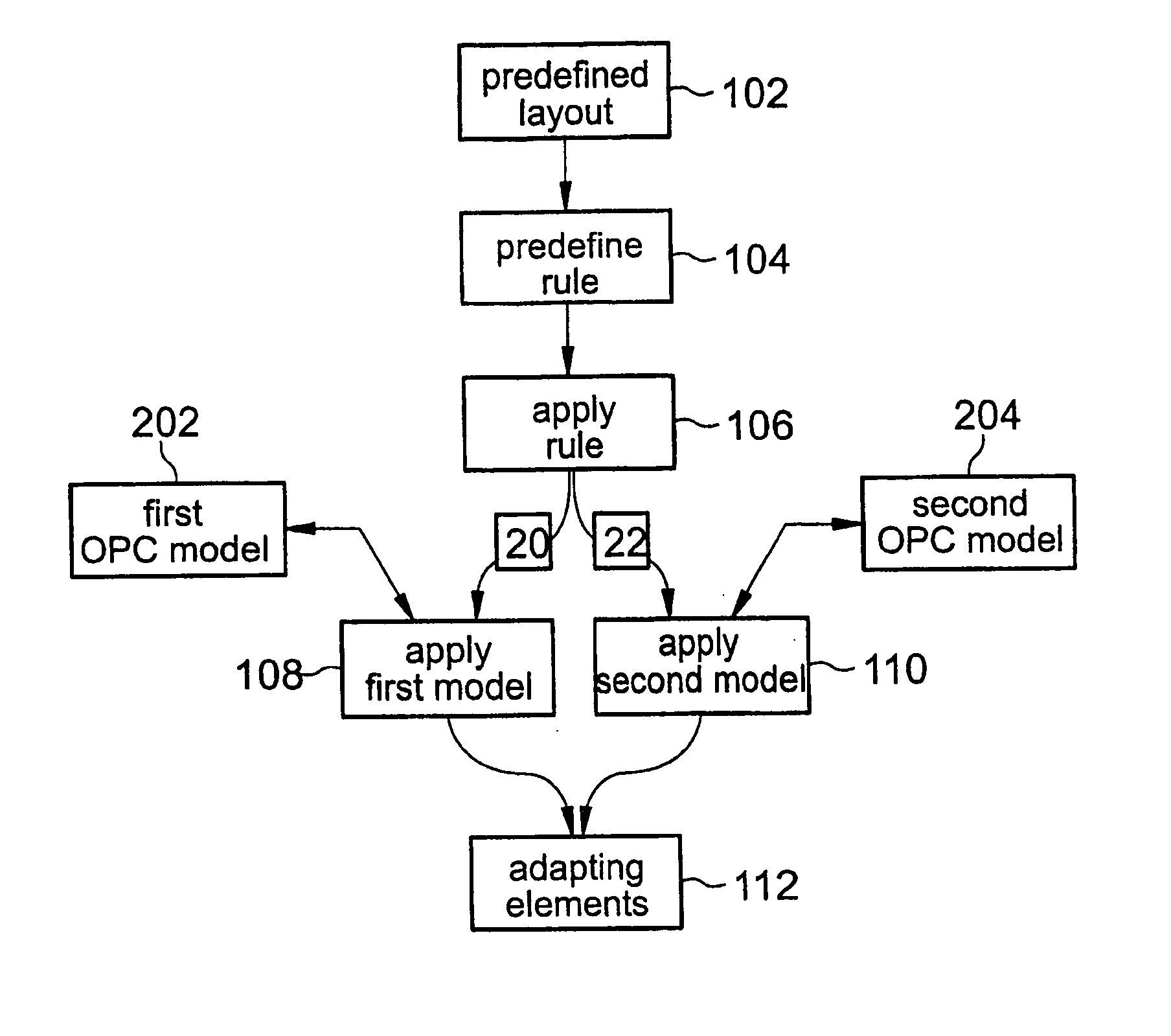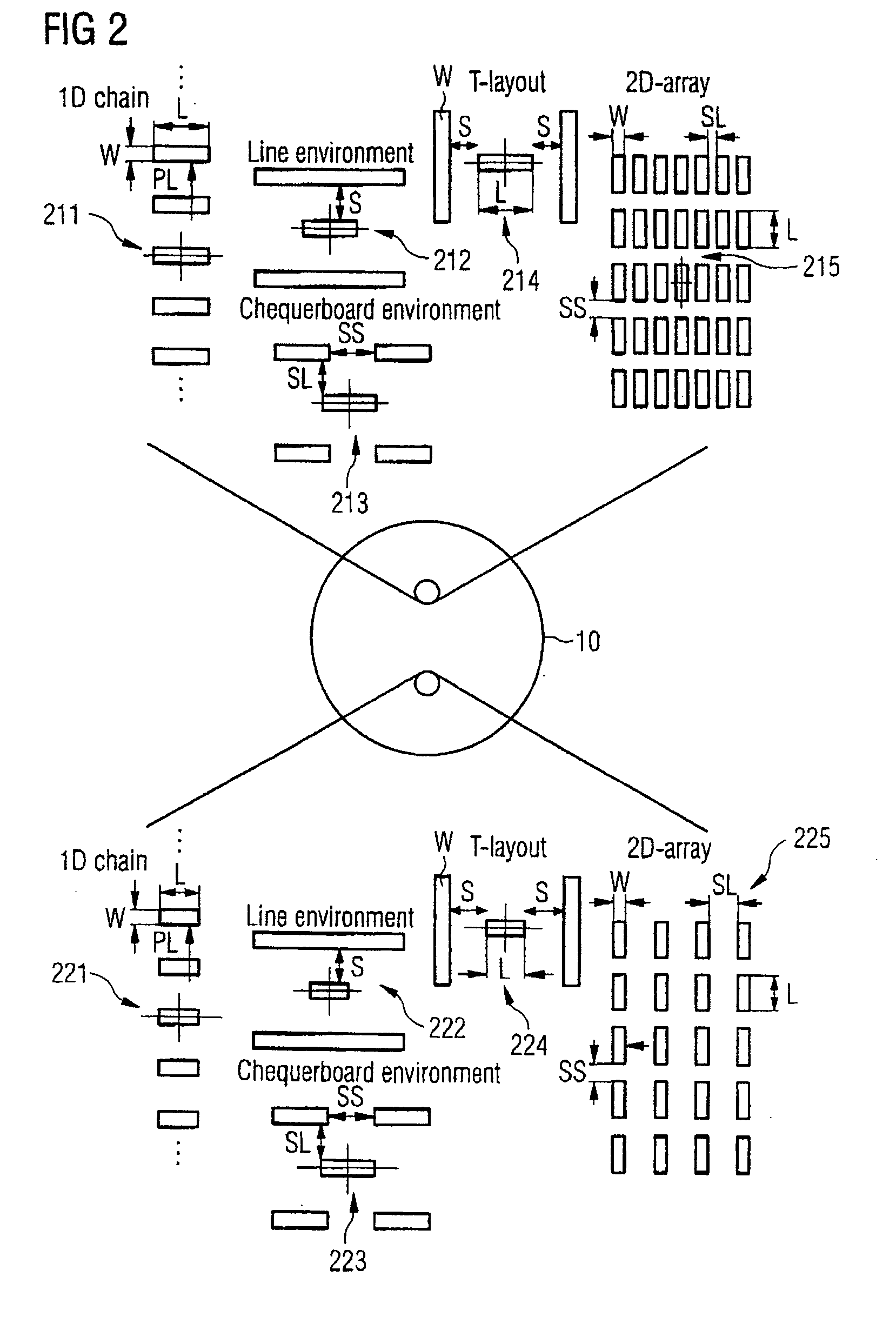Method for correcting the optical proximity effect
a technology of optical proximity and optical proximity, applied in the field of optical proximity effect correction, can solve the problems of proximity errors, undesirable and unavoidable light contributions of respective adjacent structure elements in the photosensitive layer, and often occur imaging errors, and achieve the effect of improving the quality of correction and high matching
- Summary
- Abstract
- Description
- Claims
- Application Information
AI Technical Summary
Benefits of technology
Problems solved by technology
Method used
Image
Examples
Embodiment Construction
[0050] The making and using of the presently preferred embodiments are discussed in detail below. It should be appreciated, however, that the present invention provides many applicable inventive concepts that can be embodied in a wide variety of specific contexts. The specific embodiments discussed are merely illustrative of specific ways to make and use the invention, and do not limit the scope of the invention.
[0051]FIG. 1 shows, by way of example, the sequence of the method according to a preferred embodiment of the invention in a flow diagram. First, a layout for producing a mask plane is predefined (step 102). The layout has been extracted, for example, beforehand from the overall design of an integrated circuit.
[0052] The application of the further method is based on the knowledge that the concrete layout poses problems when projecting a mask onto a wafer. In particular, it has been found that the dimensions of the structures that have hitherto been OPC-corrected by means of...
PUM
 Login to View More
Login to View More Abstract
Description
Claims
Application Information
 Login to View More
Login to View More - R&D
- Intellectual Property
- Life Sciences
- Materials
- Tech Scout
- Unparalleled Data Quality
- Higher Quality Content
- 60% Fewer Hallucinations
Browse by: Latest US Patents, China's latest patents, Technical Efficacy Thesaurus, Application Domain, Technology Topic, Popular Technical Reports.
© 2025 PatSnap. All rights reserved.Legal|Privacy policy|Modern Slavery Act Transparency Statement|Sitemap|About US| Contact US: help@patsnap.com



